Abstract
A soft-agar diffusion-chamber technique was used to grow colonies from human melanoma xenografts. Plating efficiencies ranged from 0-042% to 75% and increased with serial passage of some tumours. Cells in colonies were similar to human melanoma cells in morphology, histochemistry and ultrastructure, and were shown by immunofluorescence to contain human antigens. Xenograft tumours could be regrown from the colonies when re-implanted into immune-deprived mice. Cell-survival curves were constructed from 5 xenograft lines treated with 4 cytotoxic drugs. All lines were resistant to adriamycin, but each line appeared to have an individual spectrum of sensitivity to the more effective drugs. The responses were compatible with the clinical pattern of response in melanoma, and in 2 cases the objective response of lung metastases to treatment with melphalan was consistent with the xenograft cell-survival data. Dose-response curves were exponential for treatment with methyl-CCNU and melphalan, but distinct plateaux were seen for 2 xenografts treated with doses of DTIC over 100 mg/kg. These were thought to be due to resistant subpopulations of clonogenic cells within the tumours.
Full text
PDF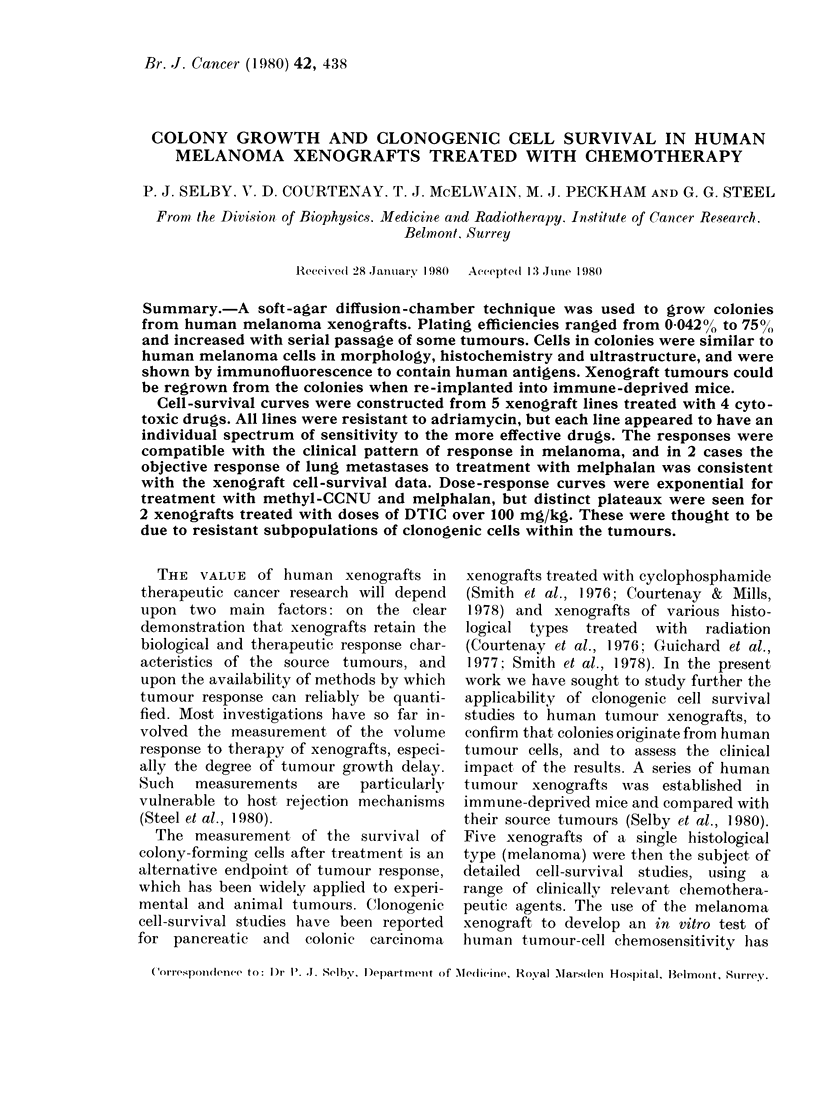
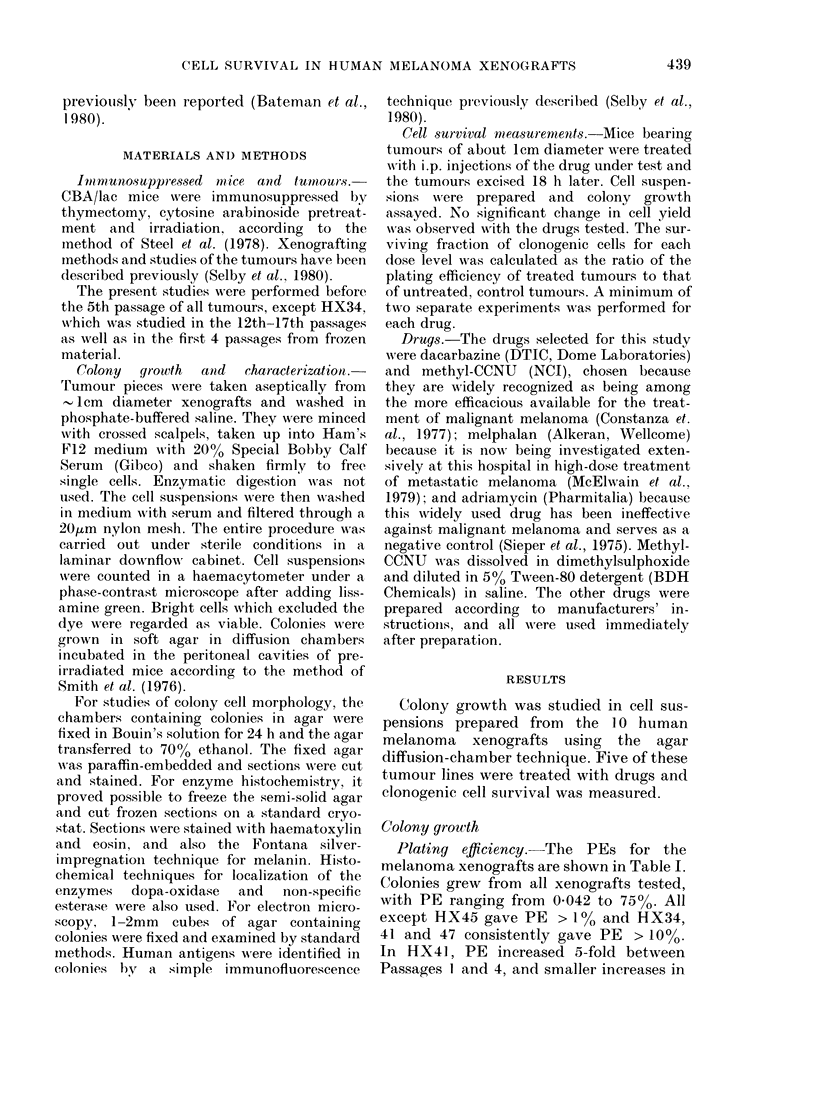

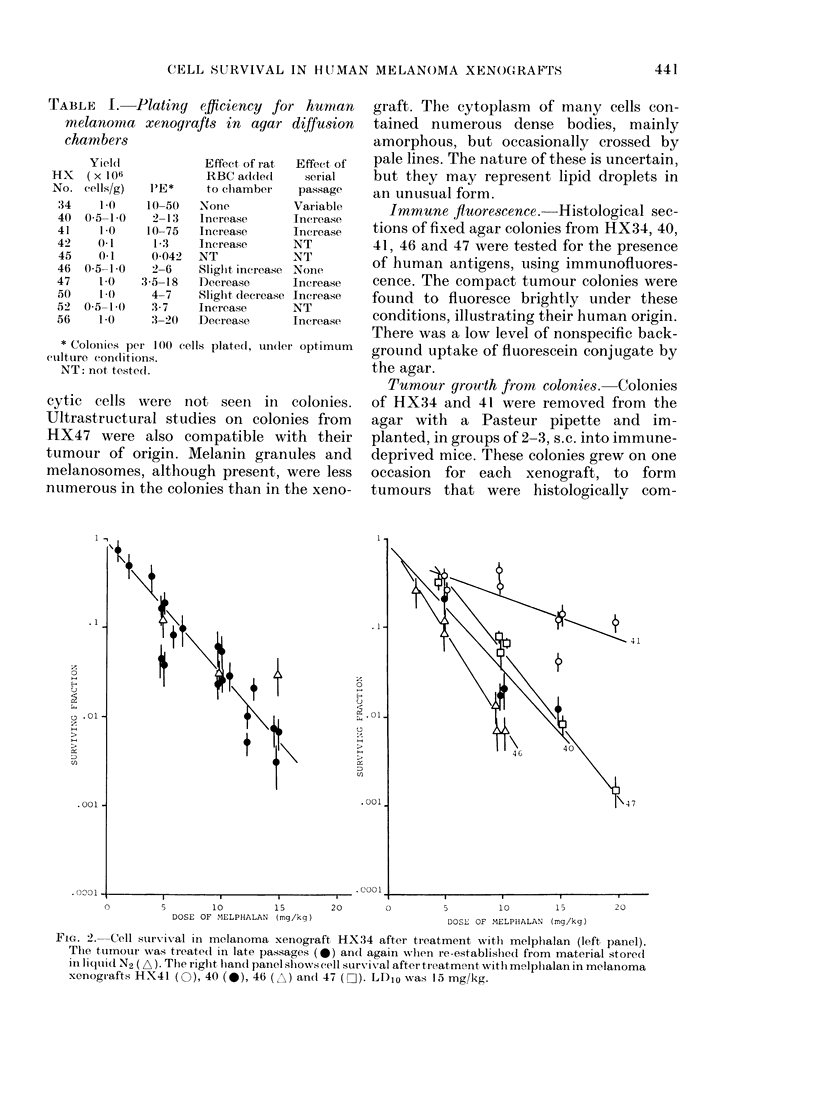
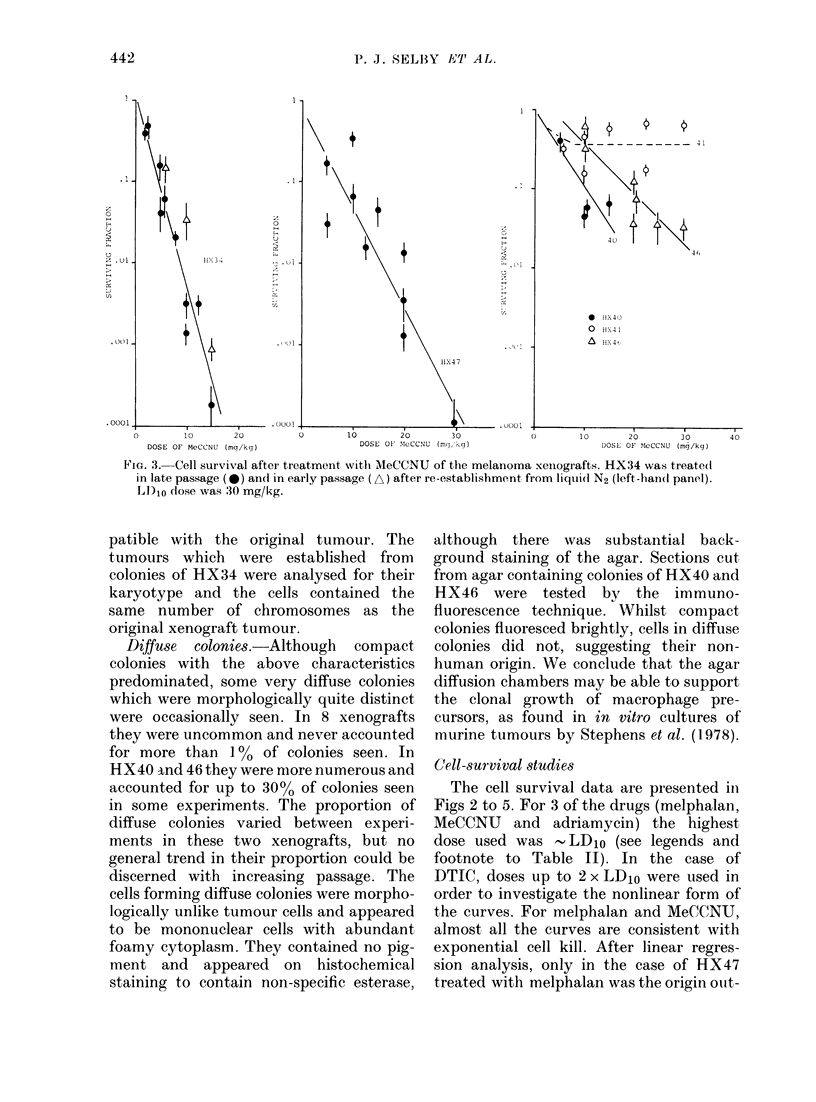
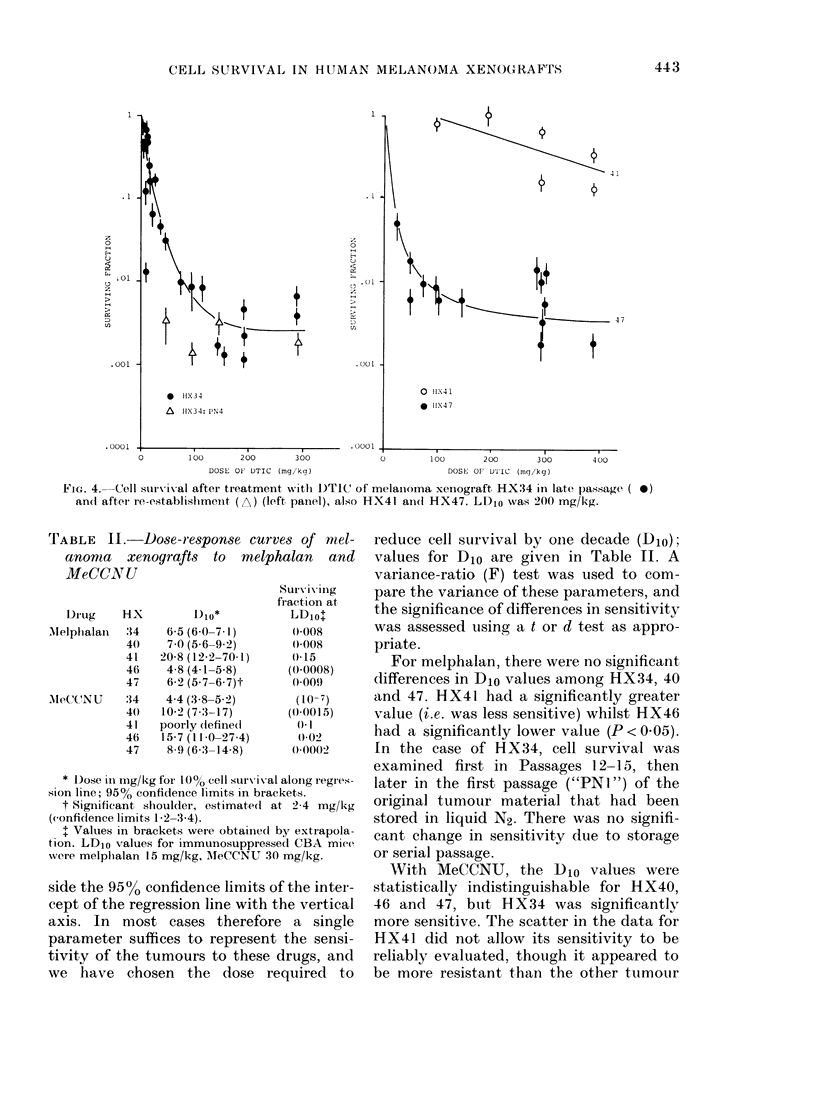
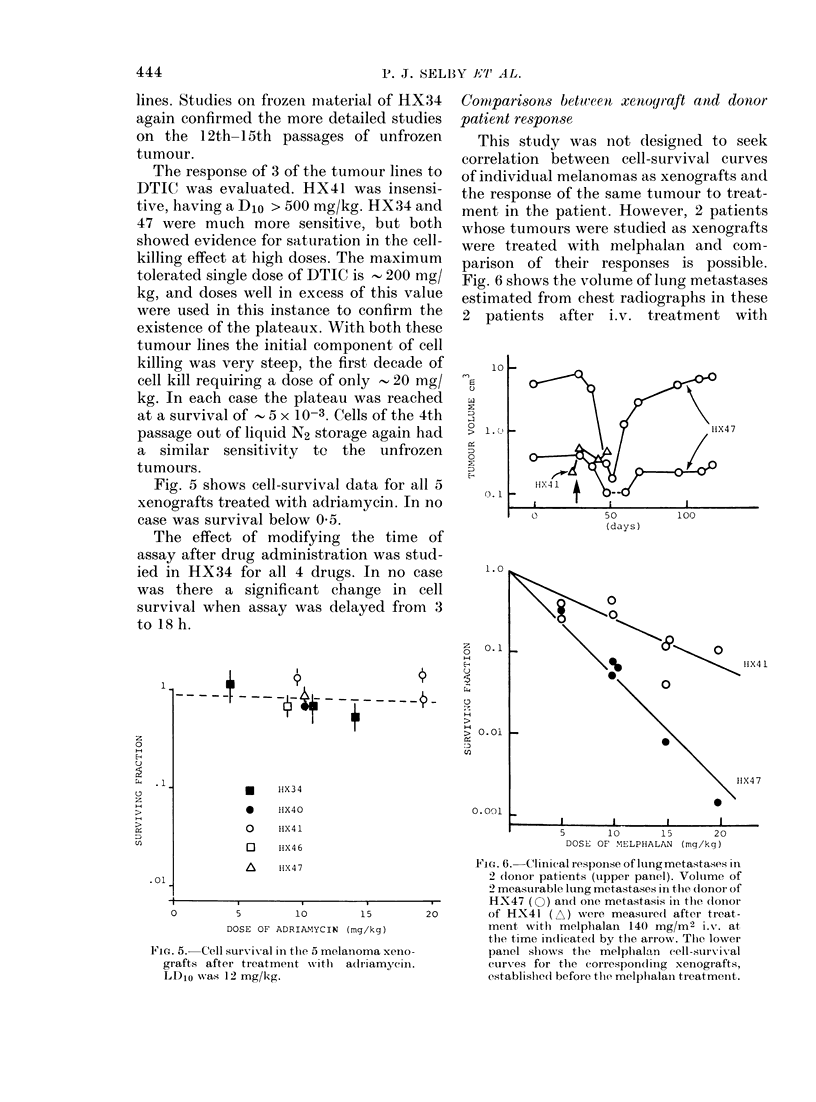
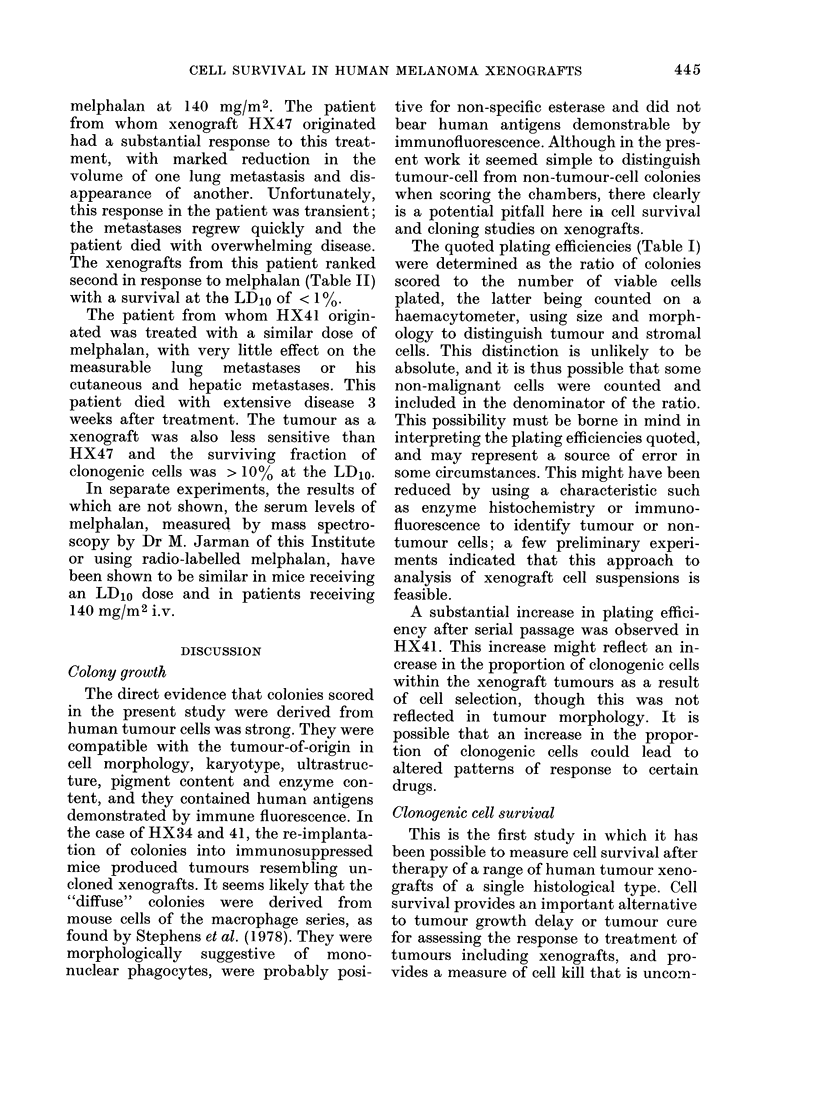
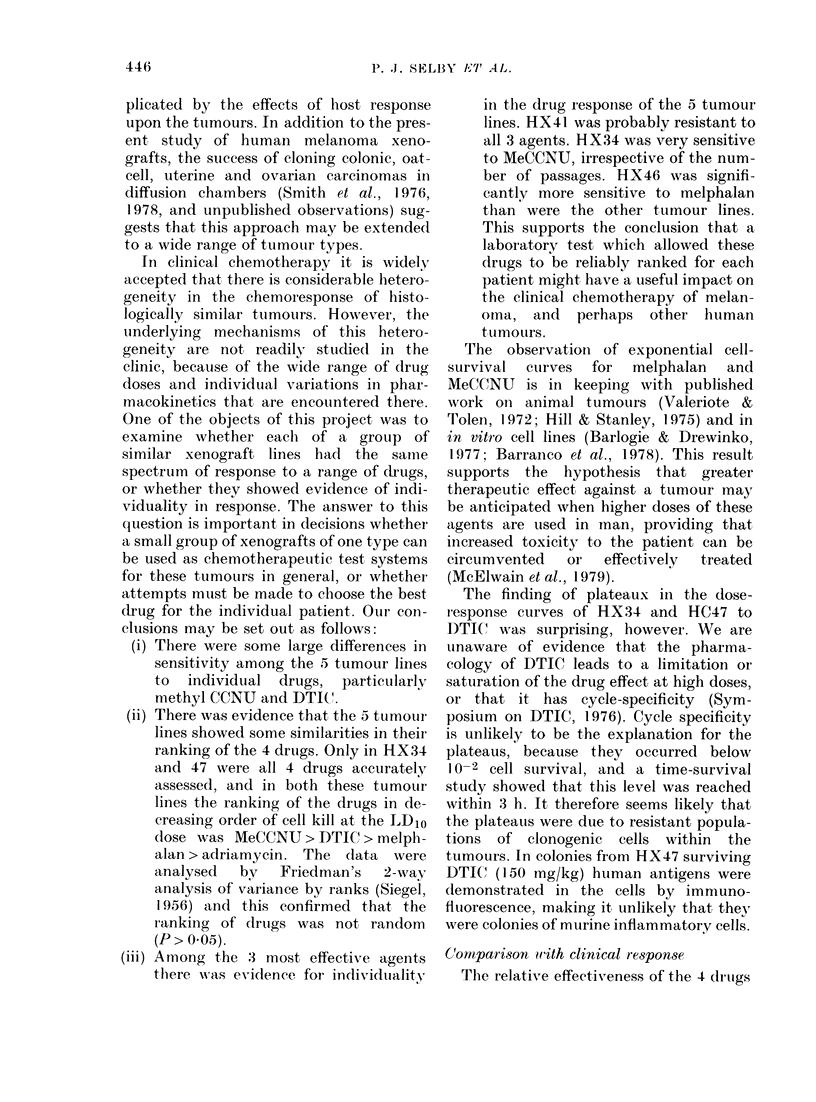
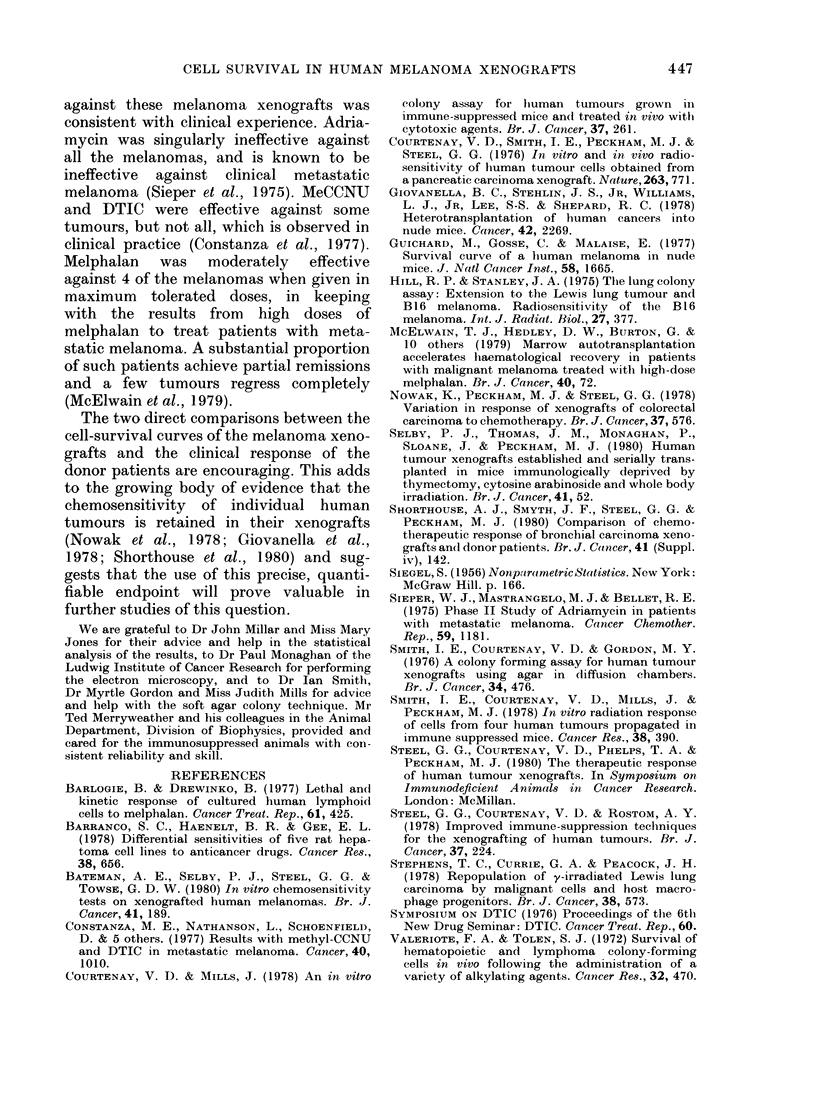
Images in this article
Selected References
These references are in PubMed. This may not be the complete list of references from this article.
- Barlogie B., Drewinko B. Lethal and kinetic response of cultured human lymphoid cells to melphalan. Cancer Treat Rep. 1977 May-Jun;61(3):425–436. [PubMed] [Google Scholar]
- Barranco S. C., Haenelt B. R., Gee E. L. Differential sensitivities of five rat hepatoma cell lines to anticancer drugs. Cancer Res. 1978 Mar;38(3):656–660. [PubMed] [Google Scholar]
- Bateman A. E., Selby P. J., Steel G. G., Towse G. D. In vitro chemosensitivity tests on xenografted human melanomas. Br J Cancer. 1980 Feb;41(2):189–198. doi: 10.1038/bjc.1980.29. [DOI] [PMC free article] [PubMed] [Google Scholar]
- Courtenay V. D., Mills J. An in vitro colony assay for human tumours grown in immune-suppressed mice and treated in vivo with cytotoxic agents. Br J Cancer. 1978 Feb;37(2):261–268. doi: 10.1038/bjc.1978.35. [DOI] [PMC free article] [PubMed] [Google Scholar]
- Courtenay V. D., Smith I. E., Peckham M. J., Steel G. G. In vitro and in vivo radiosensitivity of human tumour cells obtained from a pancreatic carcinoma xenograft. Nature. 1976 Oct 28;263(5580):771–772. doi: 10.1038/263771a0. [DOI] [PubMed] [Google Scholar]
- Giovanella B. C., Stehlin J. S., Jr, Williams L. J., Jr, Lee S. S., Shepard R. C. Heterotransplantation of human cancers into nude mice: a model system for human cancer chemotherapy. Cancer. 1978 Nov;42(5):2269–2281. doi: 10.1002/1097-0142(197811)42:5<2269::aid-cncr2820420527>3.0.co;2-f. [DOI] [PubMed] [Google Scholar]
- Guichard M., Gosse C., Malaise E. P. Survival curve of a human melanoma in nude mice. J Natl Cancer Inst. 1977 Jun;58(6):1665–1669. doi: 10.1093/jnci/58.6.1665. [DOI] [PubMed] [Google Scholar]
- Hill R. P., Stanley J. A. The lung-colony assay: extension to the Lewis lung tumour and the B16 melanoma--radiosensitivity of B16 melanoma cells. Int J Radiat Biol Relat Stud Phys Chem Med. 1975 Apr;27(4):377–387. doi: 10.1080/09553007514550351. [DOI] [PubMed] [Google Scholar]
- Nowak K., Peckham M. J., Steel G. G. Variation in response of xenografts of colo-rectal carcinoma to chemotherapy. Br J Cancer. 1978 Apr;37(4):576–584. doi: 10.1038/bjc.1978.87. [DOI] [PMC free article] [PubMed] [Google Scholar]
- Selby P. J., Thomas J. M., Monaghan P., Sloane J., Peckham M. J. Human tumour xenografts established and serially transplanted in mice immunologically deprived by thymectomy, cytosine arabinoside and whole-body irradiation. Br J Cancer. 1980 Jan;41(1):52–61. doi: 10.1038/bjc.1980.7. [DOI] [PMC free article] [PubMed] [Google Scholar]
- Shorthouse A. J., Peckham M. J., Smyth J. F., Steel G. G. The therapeutic response of bronchial carcinoma xenografts: a direct patient-xenograft comparison. Br J Cancer Suppl. 1980 Apr;4:142–145. [PMC free article] [PubMed] [Google Scholar]
- Sieper W. J., Mastrangelo M. J., Belle R. E. Phase II study of adriamycin (NSC-123127) in patients with metastatic melanoma. Cancer Chemother Rep. 1975 Nov-Dec;59(6):1181–1182. [PubMed] [Google Scholar]
- Smith I. E., Courtenay V. D., Gordon M. Y. A colony-forming assay for human tumour xenografts using agar in diffusion chambers. Br J Cancer. 1976 Nov;34(5):476–483. doi: 10.1038/bjc.1976.201. [DOI] [PMC free article] [PubMed] [Google Scholar]
- Smith I. E., Courtenay V. D., Mills J., Peckham M. J. In vitro radiation response of cells from four human tumors propagated in immune-suppressed mice. Cancer Res. 1978 Feb;38(2):390–392. [PubMed] [Google Scholar]
- Steel G. G., Courtenay V. D., Rostom A. Y. Improved immune-suppression techniques for the exongrafting of human tumours. Br J Cancer. 1978 Feb;37(2):224–230. doi: 10.1038/bjc.1978.30. [DOI] [PMC free article] [PubMed] [Google Scholar]
- Stephens T. C., Currie G. A., Peacock J. H. Repopulation of gamma-irradiated Lewis lung carcinoma by malignant cells and host macrophage progenitors. Br J Cancer. 1978 Nov;38(5):573–582. doi: 10.1038/bjc.1978.252. [DOI] [PMC free article] [PubMed] [Google Scholar]
- Valeriote F. A., Tolen S. J. Survival of hematopoietic and lymphoma colony-forming cells in vivo following the administration of a variety of alkylating agents. Cancer Res. 1972 Mar;32(3):470–476. [PubMed] [Google Scholar]



